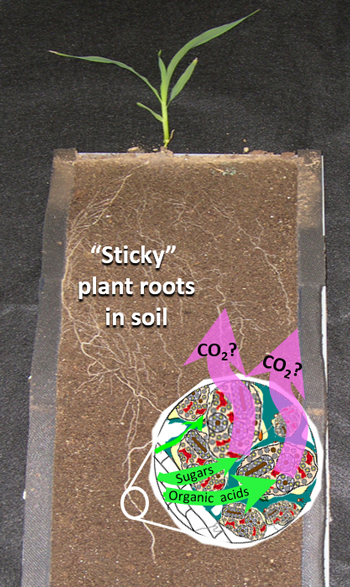Team Digs Deep to Discover if Viral Infections in Plants Affect Soil Carbon Storage

 Photo illustration by Zoe Cardon
Photo illustration by Zoe CardonMBL Senior Scientist Zoe Cardon has received a collaborative grant from the Department of Energy to study how viral infections in plants can affect the fate of the largest pool of organic carbon stored in soils: organic carbon bound to minerals.
As carbon dioxide (CO2) concentrations in the atmosphere continue to rise, driving further climate change, it becomes more and more urgent to understand how plant roots, soil microbes, and soil minerals interact to control whether soils store carbon or release CO2.
One way that plant roots strongly contribute to soil carbon storage is by producing sugars, organic acids, and even whole cells that are lost to soil. But there is a twist in the story. Certain types of compounds derived from roots may also destabilize the bonds between soil minerals and existing soil organic matter (SOM), making that SOM more vulnerable to microbial attack and decomposition. Soil carbon loss, instead of storage, may result.
The question then becomes what types of compounds, and how much of them, are lost from plant roots to soils. Cardon and colleagues have found that, upon infection with particular plant viruses, plant roots can lose so many compounds to their surroundings that they become literally “sticky” to the touch. Understanding whether and how these “sticky roots” drive increased decomposition of existing mineral-stabilized soil carbon promises to transform our understanding of the importance of common virus infection for soil carbon dynamics and global change.
Co-principal investigators with Cardon, the lead principal investigator on this project, include Marco Keiluweit, University of Massachusetts, Amherst; Carolyn Malmstrom, Michigan State University; and William J Riley, Lawrence Berkeley National Laboratory.